Today I want to share a great piece written by Steve Johns. I’m sure you’ll enjoy it as much as I do.
Duane
No Stone Left Unturned: The Last Cobra
by Steve Johns
“No stone left unturned.” This is a saying we’ve all heard but is it something we practice?
Years ago, I had discovered a lost 1967 Shelby Trans AM notchback coupe hiding in plain sight and, except for the fact you couldn’t see it, it was exciting to find. Proving its history was a different matter, and months of dead ends were followed by one single casual comment from a Shelby TA driver named Pete Feistmann, which sent me on a different path.
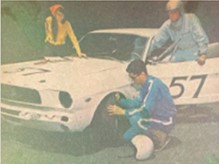
I always close a car call with, “Do you know of any old race cars or stuff from the old days?”
This time, after looking under another rock, I turned a pebble and got a yes!
“An old friend and neighbor back in Utah has a car that was the last Shelby race car. A guy named Duane Carling, I think?” A possible car, name and location was just enough to take me on one of the greatest rides of my life.
After a frenzied day, I had Mr. Carling on the phone, and to my amazement everything I heard about and imagined was in fact true, hiding in plain sight, rested the completely original and untouched Shelby American tub (chassis) destined for the 1967 Can-Am racing series. Shelby American and Ford planned on closing out the racing season with the Can-Am car that was sitting in obscurity that I had found. A deal was struck and I was off to the races documenting this rare, last of three produced, Shelby.
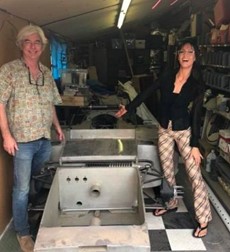
Soon, I realized that the Can Am team cars were so obscure that most of the available information was pure guesswork and not based in fact at all, this mainly because in 1967 car #1 was buried in a landfill in Los Angeles, then car #2 was bumped and bruised before going missing, and my #3 was off radar for decades sitting in the rafters. Mr. Carling is a true car guy, as evidenced by sharing his detailed knowledge and every sheet of paper he had on the car and then got me started. He truly passed the baton.

A precious few photographs taken by Dave Friedman and a couple of period-original Shelby letters and documents were just enough to point me in the right direction. First and foremost was a strong desire to recreate a Dave Friedman photograph from Riverside. This 1967 photograph with Jim O’Leary, John Collins, Mr. Smith (d), Phil Remington, Carroll Shelby and Driver Jerry Titus (d) was truly inspirational. Going directly to Mr. Shelby was the key, and Scott Black of TimePiece PR and Marketing, proved to be instrumental in helping not only with that fateful meeting but throughout the evolution of finishing this last Shelby American car.
The initial meeting with O’Leary, Remington and Collins was inspirational because it was as though they were seeing an old friend and instantly the specific memories of the car started flowing in conversation. Their good and bad memories were filmed and their casual anecdotes of Collins stopping by designer Len Terry’s shop in England after Le Mans, Remington making trackside alterations to #1 at Riverside, and Shelby’s dislike for the car because he got stuck paying for it were amazing indeed.
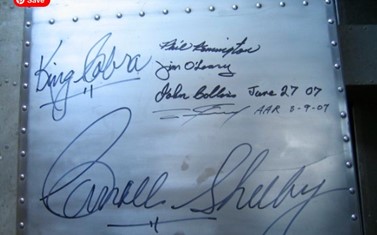
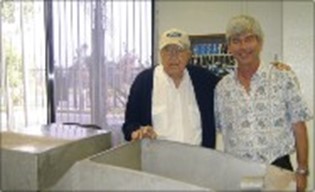
In a matter of hours with these Shelby icons, this obscure footnote Cobra had the ingredients for me to further document and investigate it, especially after Phil Remington verified not only the Cobra’s true identity as being Shelbys “King Cobra” and that it was indeed the last car ever produced by Shelby American. The significance of this last Cobra kept evolving and growing after each interview, photo and document was discovered.
Notably missing from the initial meeting was Mr. Shelby who actually arranged the meeting, location and time – that left me puzzled. Mr. Remingtion, sensing this, graciously said that Mr. Shelby “always has people wanting him to waive his wand and validate some random car” and he didn’t want to waste his time if it didn’t check out. Shelby chose to wait until after they verified that it was truly his long lost King Cobra before he became involved with validating the car and solidifying its place in the Shelby American story.
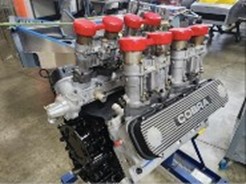
The document trail and photographs were scant but exceedingly rich with invaluable information like the original dated 1968 sales invoice for the remnants of the Can Am team or the original letter from Mr. Shelby stating that “Remington was the builder of Len’s design”. Photographs from the great Dave Friedman documented Chassis #1 through its development and race at Riverside proved instrumental in getting my #3 correct.
Most of these rare cars have some hen’s teeth parts and on that we can agree. The King Cobra seems to have a full set – in rows no less. The King Cobra came along at a time of transition from sleek aerodynamics to brute McLaren power and downforce and it was not on the winning side as a result. History knocks the performance and handling of the car when in reality, it qualified 13th on a grid of 36 cars that started. Of note was its outrunning and out qualifying the Ferrari 330 P4.

Seeds of greatness with the Can Am effort were there but the winds took it in another direction. Len Terry’s revolutionary suspension design collided with proven conventional suspension favored by Phil Remington, and driver Jerry Titus suffered an ill-handling car as a result. An innovative cooling system failed, lack of development time, late engine delivery and a long list of unproven prototype components fueled conflicting approaches.
Ironically, many of the cutting edge developments that plagued the original effort have proven to be the most unique and rare attributes unique to this last Cobra. On the heels of designing Dan Gurney’s winning Eagle and the Indianapolis 500 winner of Jimmy Clark, Terry was the magic man for the King Cobra. Shelby and Gurney owned All American Racers (AAR) so Terry was tasked with using as many of the proven Eagle components as possible for both cost and saving time.
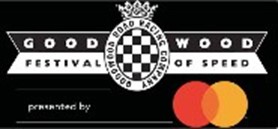
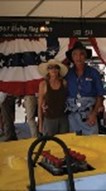
In addition to the innovative suspension, the King Cobra is the only Cobra with AAR uprights and wheels powered by an XE351 block topped with Gurney Weslake heads. All roads Weslake lead to Jay Cushman of Cushman Competition in Windham Maine and John Garrote of Cobra Automotive in Connecticut, whose passions for helping those in need, like me, to keep the rarest of the rare on the road. Shelby cast and used “COBRA” valve covers on the Weslake heads for this singularly amazing application.
The aforementioned XE block is one of about 65 produced in 1967, and although there are a couple of known original assemblies, this is believed to be the only example in the world running without having been modified for a modern crank or other upgrades. A small block bottom end with a tall deck, an XE distributor and an original crank unique to this engine were tough things to source indeed. The first generation 48 IDA carburetors were part of the original purchase and are believed to be from the Shelby GT40 program in 1967, and thanks to the capable hands of engine builder extraordinaire Rob Kazan, it lives!
The 5 speed ZF transmission is icing on the cake after you absorb seeing the original doors and nose section from chassis #1. These original doors and nose section are the only known original Shelby werks yellow body panels and remain just as they were in 1967 after spending 45 years in a storage box. As each rare part pulls together to form the whole, it’s taken a village of mechanical artists to breathe life into the King Cobra and get it back on the track, its natural habitat.
A parallel journey to completing the Cobra mechanically has been the relationships forged together with passion for motorsport and Shelby American. As I reflect on the journey of finishing what Mr. Shelby started, one word comes to mind – family. Shelby American is about legacy and looking ahead to the next iteration of ‘America’s Car.’ Carroll Shelby is in our hotrodder, muscle car DNA.
Shelby Team master mechanic and manager John Collins entrusted the job of finishing the King Cobra to his son Graham Collins in Santa Ana, who is carrying on the Shelby American way of doing things. This has led to an amazing group of artisans as unique as the one of a kind parts that comprise the King Cobra. Give some flat sheets of aluminum to Kris Kopp in Oregon and watch him start hammering them into the amazing body that covers this masterpiece of innovation.
Matching the 55-year-old paint was never a concern because I called longtime friend Nick Clemence from European Collectibles in Costa Mesa, CA.
“Hey Nick, I got a weird Porsche here that needs some paint, can you do it?”
“Yes.”
“Oh, it’s a 55-year-old match, is that O.K.?”
“Sure.”
“OH ! I guess it’s a water pumping Ford Cobra afterall, is that cool?” I could hear him shaking his head over the phone!
“O.K. bring it over.”
Nick – “Anything else?”
“Well, I need it for the Quail in a couple weeks.”
“No problem.”
For a long while I thought a gifted fabricator lived outside the box but after working with Victor Hertfelder (RIP) from Jarupa and Sid from Classic Competition in San Marcos CA, I discovered that the only shape they didn’t grasp was the concept of a box. Little details popped up like making an exhaust system. It’s sorta important so there was some head scratching about who and where to go. Eventually, I made my way to Jack Burns in Costa Mesa CA, and when we raised the rear body I saw the face of a teenager as he formed the entire system in his mind and I swear he started to drool. I had my exhaust!
Of note is the passion everyone has had in jumping in to get done and is evident in the Cobra itself when you see it. Top to bottom it’s a window into the greatest time in American racing and many call it the heyday. But is it the greatest time? As I mentioned earlier, Shelby American is rooted in its past but it’s evolving into the future. Innovation is omnipresent and it’s gratifying to see Gary Patterson and Vince LaViolette glancing over their shoulders to the past as they forge ahead with what Shelby American does – build fast cars.
Marking the end of Shelby American in such a lackluster way, the Can Am effort was reduced to a third rate afterthought of a program until all the pieces of the puzzle came together over the last 16 years. After turning over so many rocks and pebbles coupled with good old fashioned luck, Shelby’s only true King Cobra is holding up its place in the history of Shelby American. Lightning struck when the King Cobra was invited to participate in the Shelby’s 60th anniversary at the Quail in Pebble Beach, and as the adage goes, about lightning striking twice, the King Cobra was invited to the Goodwood Revival 2023 for Shelby’s centennial celebration. The King Cobra is now considered one of the most influential cars in the career of Carroll Shelby.
This Aaron Shelby quote sums it up:
“Chassis #3 represents an end of an era when it comes to the Shelby Cobra line. From the first Cobra in 1962, to this car from 1967, the Shelby Cobra became synonymous with American Muscle and Victory and formed the foundation of a Shelby brand that still lives strong today.” –Aaron Shelby
Fortunately, taped interviews complement photos and documentation validating its place in Shelby history. There’s only one first and only one last, and the Len Terry T10-003 King Cobra makes for a fitting bookend to CSX 2000 as mentioned here by Aaron Shelby, Carroll’s grandson who just happens to fill the family boots perfectly.
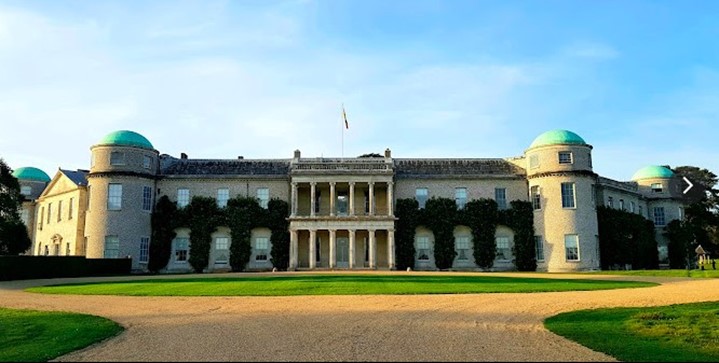

Great,
Funny to have followed your drama as the chassis moved around thru the years and you told me of its latest movement/owner/location.
Jack